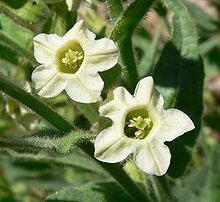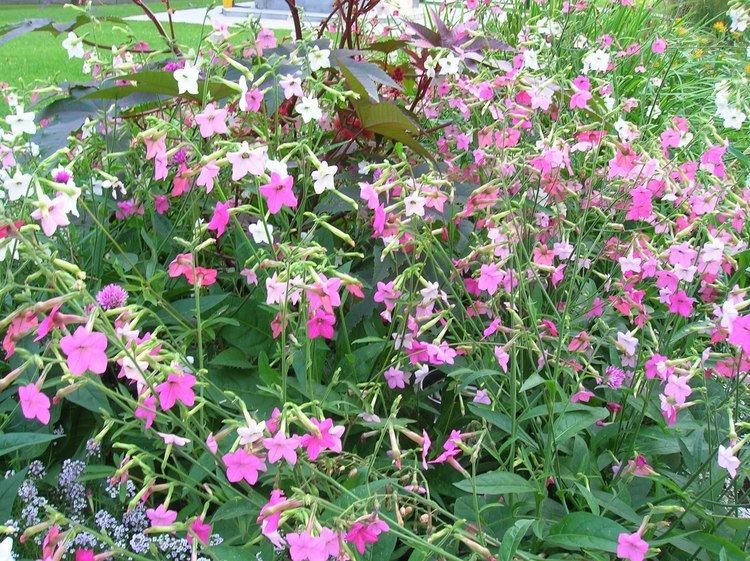Tribe Nicotianeae Higher classification Nightshade | Subfamily Nicotianoideae Scientific name Nicotiana Rank Genus | |
Lower classifications Nicotiana tabacum, Nicotiana rustica, Nicotiana benthamiana, Nicotiana alata, Nicotiana glauca | ||
Nicotiana (/ˌnɪkoʊʃiˈeɪnə, nɪˌkoʊ-, -kɒti-, -ˈɑːnə, -ˈænə/) is a genus of herbaceous plants and shrubs of the family Solanaceae, that is indigenous to the Americas, Australia, south west Africa and the South Pacific. Various Nicotiana species, commonly referred to as tobacco plants, are cultivated as ornamental garden plants. N. tabacum is grown worldwide for production of tobacco leaf for cigarettes and other tobacco products.
Contents
- Flower gardening tips how to grow nicotiana
- Species
- Manmade hybrids
- Formerly placed here
- Etymology
- Ecology
- Cultivation
- References
Flower gardening tips how to grow nicotiana
Species
The 67 species include;
Manmade hybrids

Formerly placed here
Etymology

The word nicotiana (as well as nicotine) was named in honor of Jean Nicot, French ambassador to Portugal, who in 1559 sent it as a medicine to the court of Catherine de' Medici.
Ecology
Despite containing enough nicotine and/or other compounds such as germacrene and anabasine and other piperidine alkaloids (varying between species) to deter most herbivores, a number of such animals have evolved the ability to feed on Nicotiana species without being harmed. Nonetheless, tobacco is unpalatable to many species and therefore some tobacco plants (chiefly Tree Tobacco, N. glauca) have become established as invasive species in some places.
In the nineteenth century, young tobacco plantings came under increasing attack from flea beetles (Epitrix cucumeris and/or Epitrix pubescens), causing destruction of half the United States tobacco crop in 1876. In the years afterward, many experiments were attempted and discussed to control the flea beetle. By 1880, it was discovered that replacing the branches with a frame covered by thin fabric would effectively protect plants from the beetle. This practice spread until it became ubiquitous in the 1890s.
Lepidoptera whose caterpillars feed on Nicotiana include:
These are mainly Noctuidae and some Sphingidae.
Cultivation
Several species of Nicotiana, such as N. sylvestris, N. alata 'Lime Green' and N. langsdorffii are grown as ornamental plants, often under the name of Flowering Tobacco. They are popular vespertines (evening bloomers), their sweet-smelling flowers opening in the evening to be visited by hawkmoths and other pollinators. In temperate climates they behave as annuals (Hardiness 9a-11). The hybrid cultivars Domino Series and 'Lime Green' have gained the Royal Horticultural Society's Award of Garden Merit.
Garden varieties are derived from N. alata (e.g. 'Niki' and 'Saratoga' series) and more recently from Nicotiana x sanderae (e.g. 'Perfume' and 'Domino' series).
